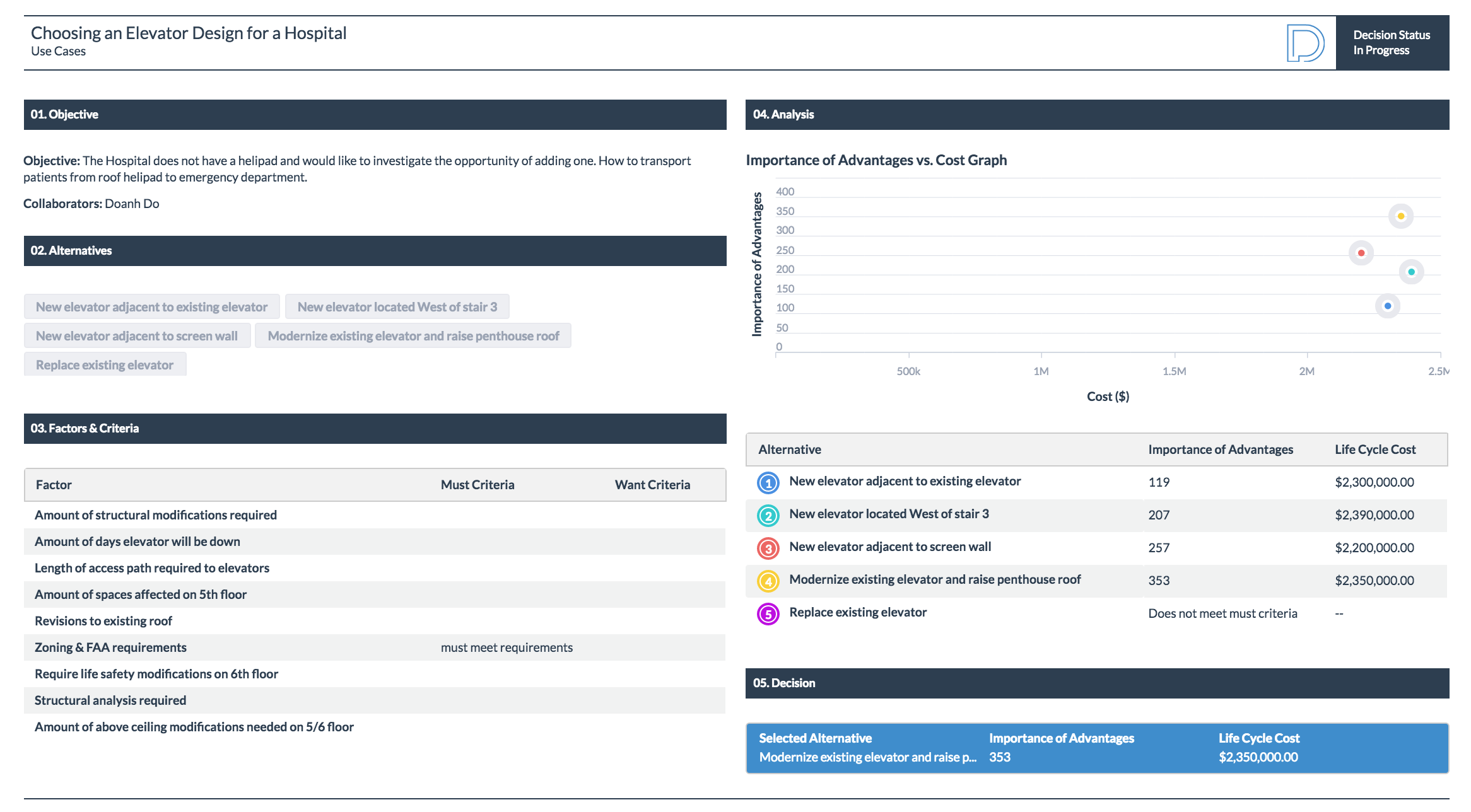All characters, companies, and events in this scenario are entirely fictional. The goal of the scenario is to demonstrate how an organization might use the Paramount Decisions process to develop a transparent and sound decision.
The project team has been tasked with designing an elevator system for a hospital project. The owner has just decided to add a helipad to the existing hospital and the team must propose and evaluate different design options. An elevator system is needed to transport patients from the helipad to the emergency room. There are many regulatory requirements as well operational requirements that must be met. Since this is a renovation on the existing hospital, the team must evaluate the impact of the proposed design on the construction schedule and the hospital operations.

The first step is to define the decision's goals and objectives. In this situation the goal is to design and evaluate different elevator systems to support the new helipad. The stakeholders of this decision include: doctors, nurses, patients, company board of directors, regulator agencies, and local community.
After doing a brainstorming session, the project team was able to develop 5 alternatives:
1) New elevator adjacent to existing elevator
2) New elevator located West of stair 3
3) New elevator adjacent to screen wall
4) Modernize existing elevator and raise penthouse roof
5) Replace existing elevator
There is currently an existing elevator; however, it is not suitable for transporting patients from the helipad to the emergency department. The team can either build a new elevator in one of three locations, modernize the existing elevator, or replace the existing elevator with a new one.
For this decision, the team has decided to consider the following factors:
1) Amount of structural modifications required
2) Amount of days elevator will be down
3) Length of access path required to elevators
4) Amount of spaces affected on 5th floor
5) Revisions to existing roof
6) Zoning & FAA requirements
7) Require life safety modifications on 6th floor
8) Structural analysis required
9) Amount of above ceiling modifications needed on 5th / 6th floor
The team wants to minimize the amount of structural modifications required, minimize the elevator downtime, and minimize impact to existing services during construction. In addition to these want criteria, they must also delivery an alternative to meets all zoning and FAA requirements.
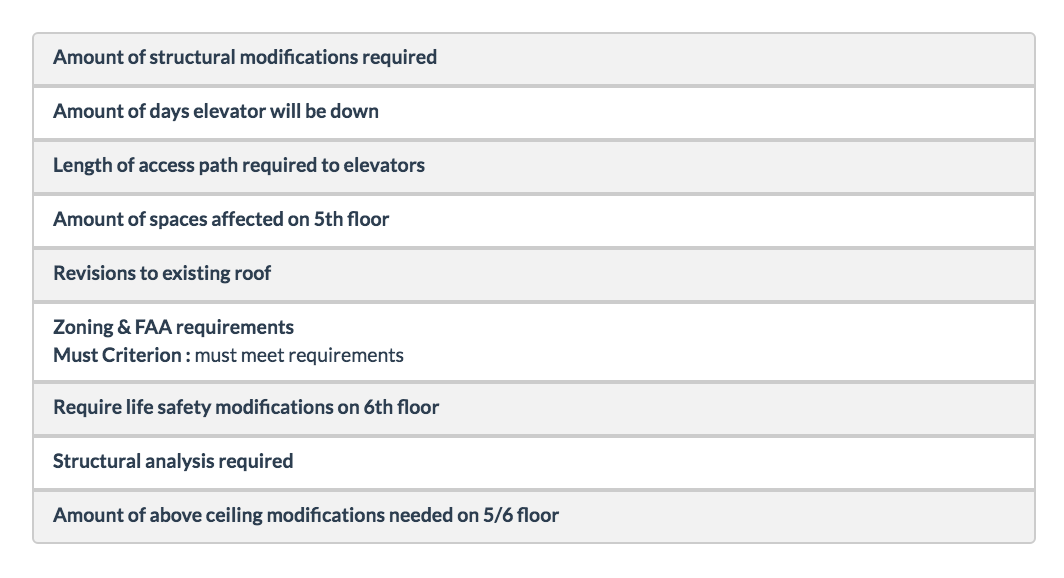
After the team has agreed on the factors and criteria, they start a rough analysis of each of the alternatives. Their analysis leads to data for the attributes. An attribute is a characteristic, quality, or consequence of just one alternative. An attribute can either be qualitative or quantitative.
Some of the attributes of this decision are shown below.
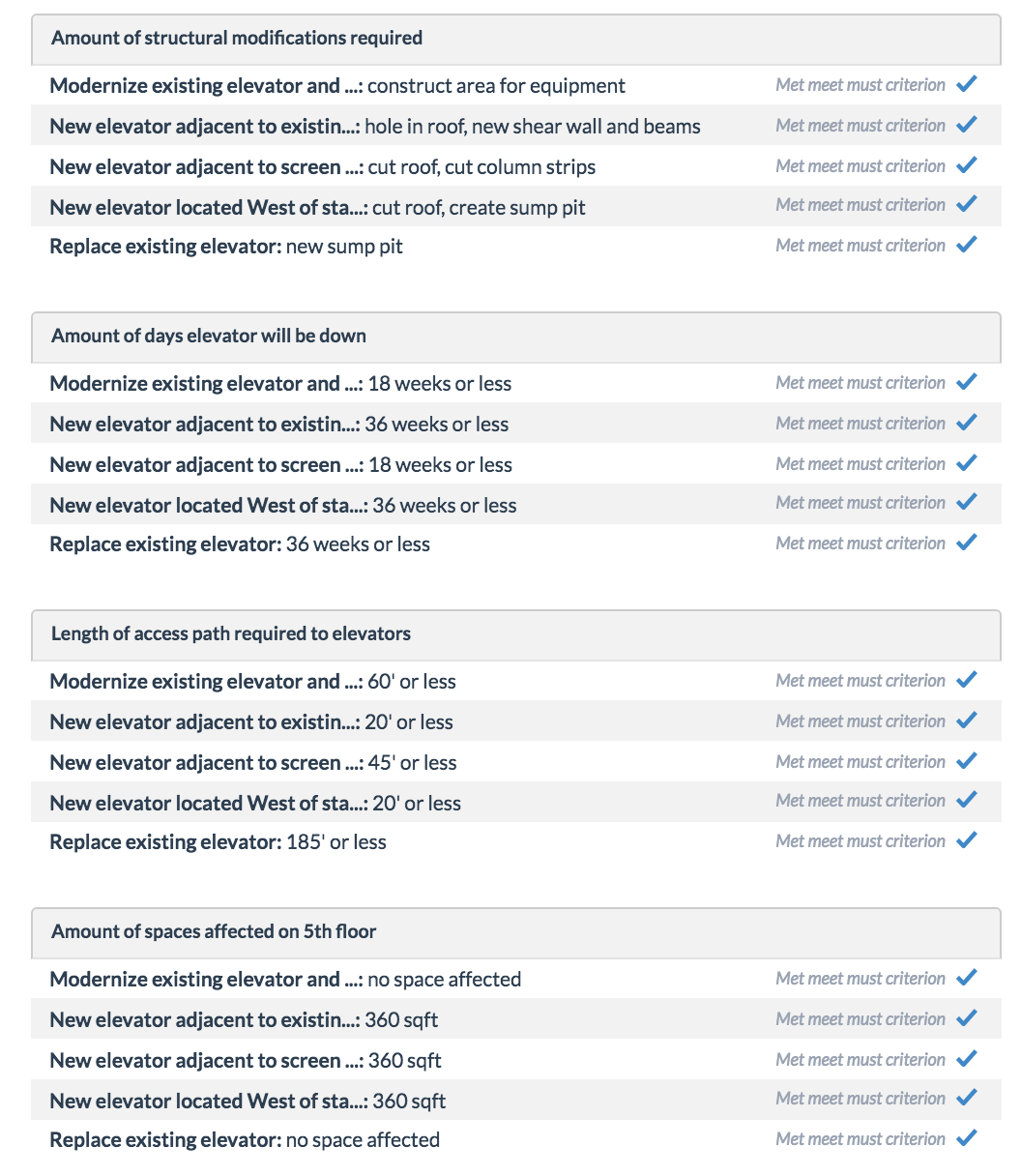
The key insight in making good decisions is to base them on the advantages of alternatives. To determine the advantages, the organization must first select the least preferred attribute within each factor. They then state the advantage of the other attributes relative to the least preferred attribute. Finally, they select the most important advantage within each factor.

The sixth step in the decision-making process is the most subjective and requires an open dialogue between the stakeholders. After a heated debate, the stakeholders came into agreement about the weights of the advantages. During the discussion, the team was able to understand the concerns of the stakeholders and gained more insights into what they find valuable.
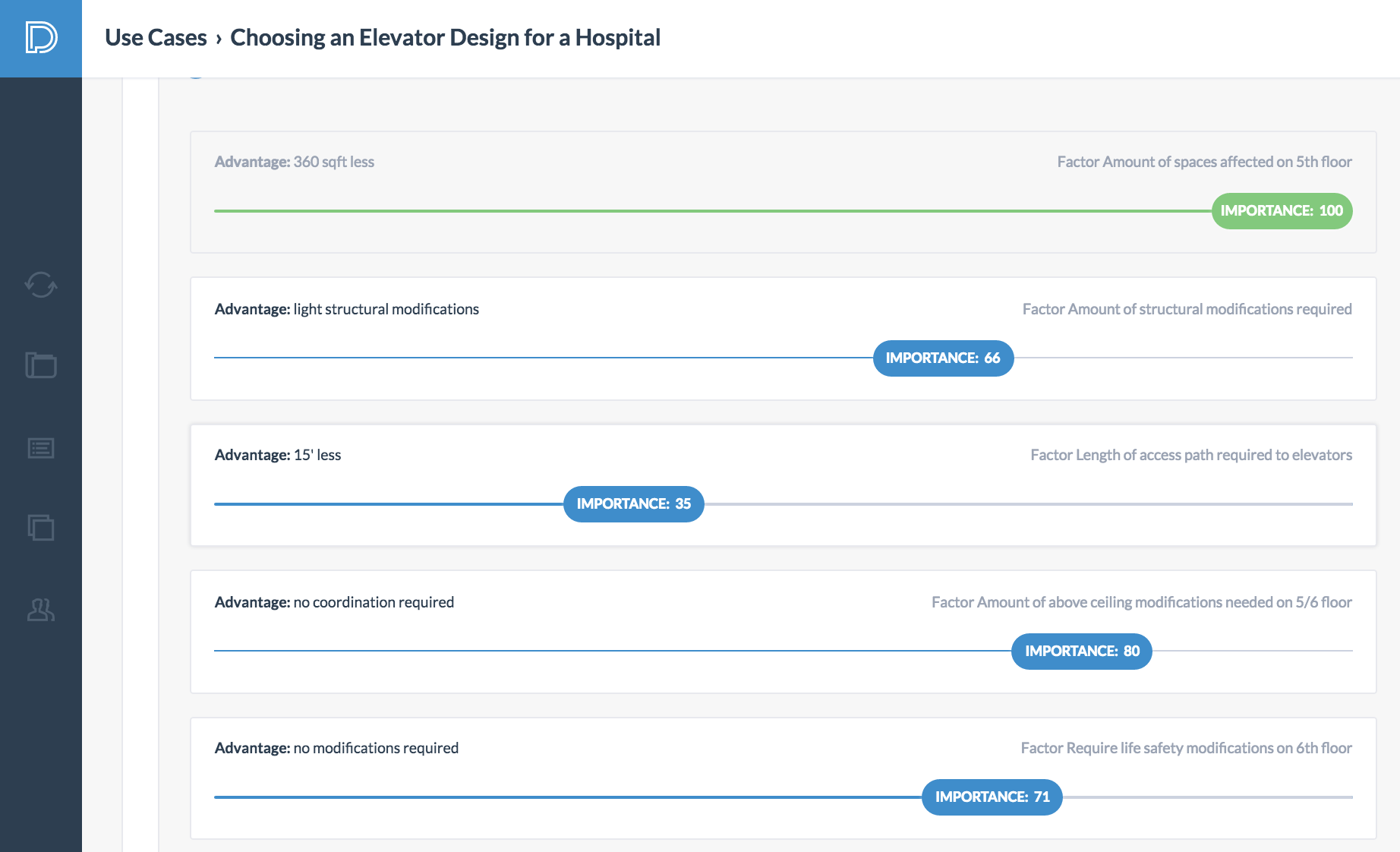
The seventh step in the decision-making process is to define the cost. The cost is the price that must be paid in order to obtain an alternative and can be broken into several categories. Notice that the cost is treated separately with a clear distinction from the previous steps.
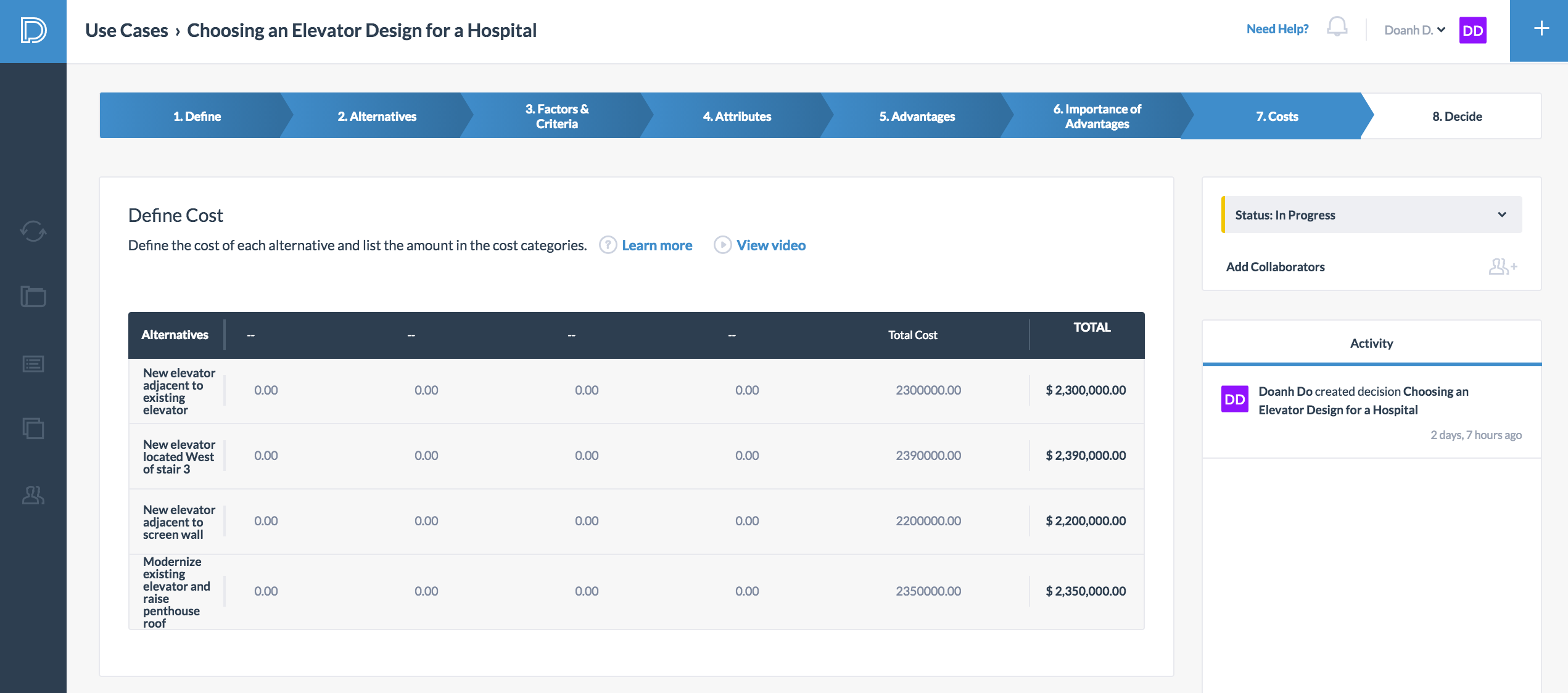
The team finally makes their decision base on the total importance of advantages vs cost. In this situation, alternative 1 and 2 are inferior because they cost more and offer fewer importance of advantages than alternative 3. The team needs to decide whether they should spend $150,000 more in order to obtain 96 additional importance of advantages (the difference between alternative 4 and alternative 3).
After some deliberation, the decision-makers came to the following conclusion: "We decided to modernize the existing elevator and raise the penthouse roof. The differences in the advantages between the two options is $150,000 and the difference in advantages was 96 points. By spending just a bit more, we are able to obtain a much more desireable elevator system."
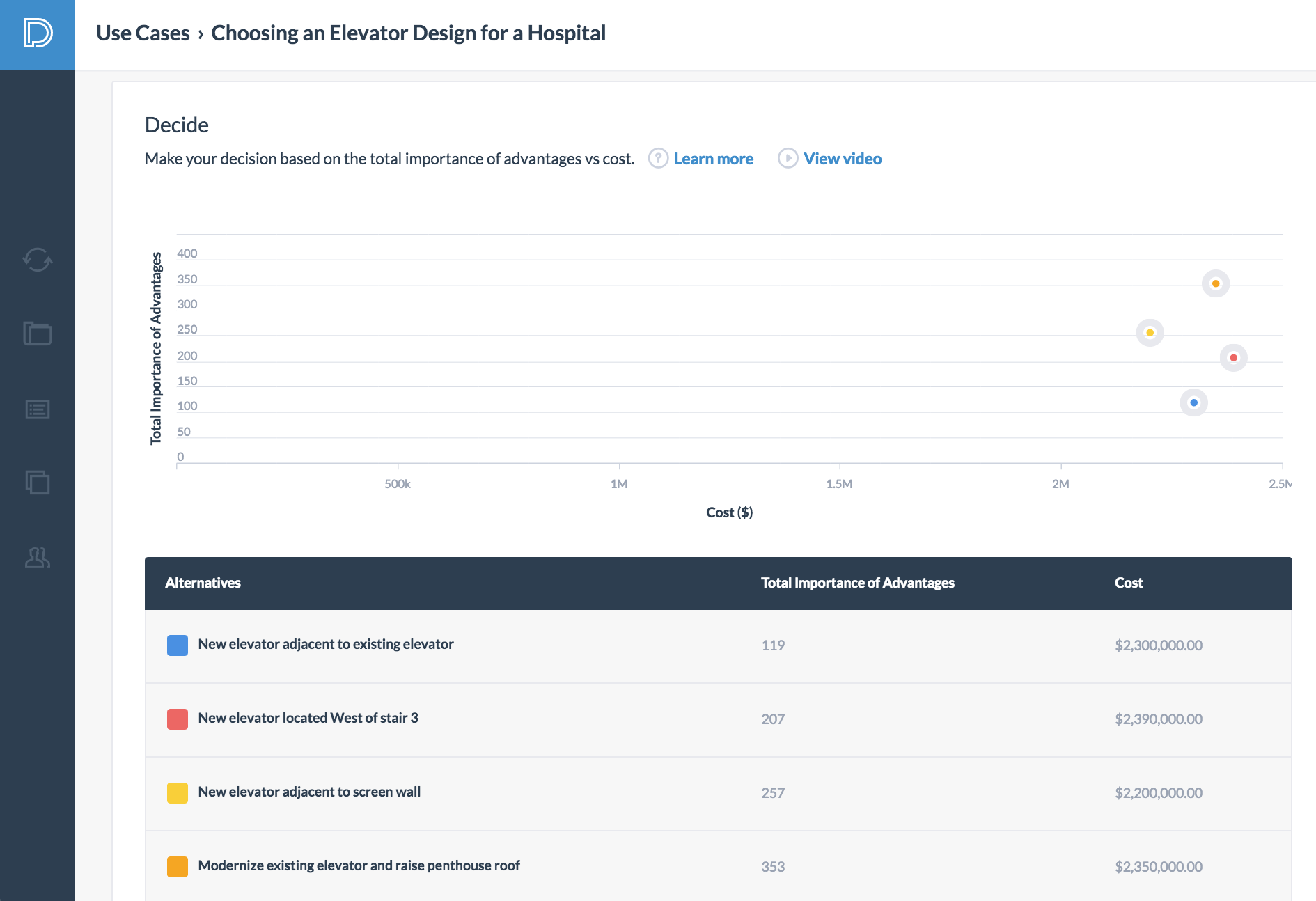
One of the benefits of using Paramount Decisions is the automatically generated reports. The software can create two types of reports based on the data inputted for the decision: 1) a full report and 2) a single page (A3 report). The decision-makers can easily send out the reports to different stakeholders to communicate the rationale of the decision. The analysis is clearly documented on the reports leading to greater transparency. In the future, the organization can review the results of the project and recalibrate their decision-making process based on lessons learned.
